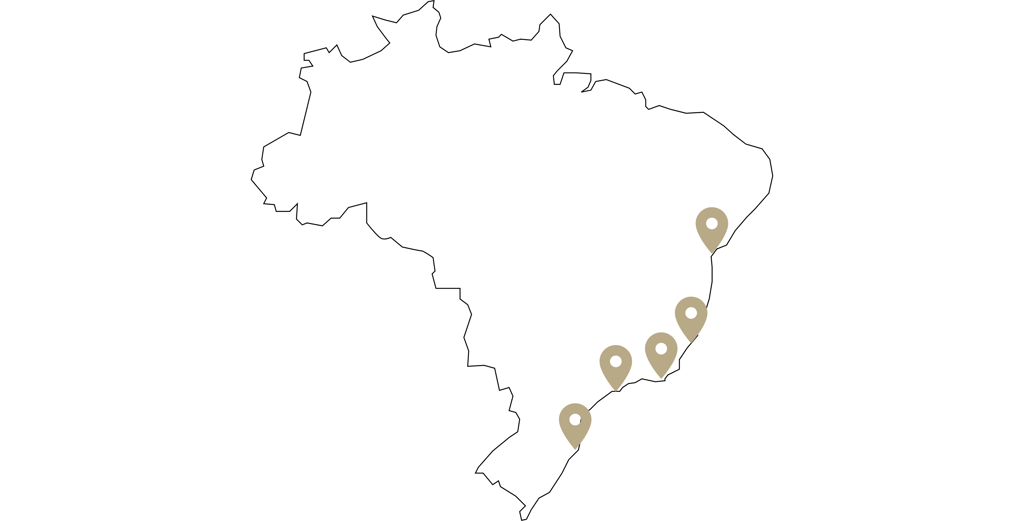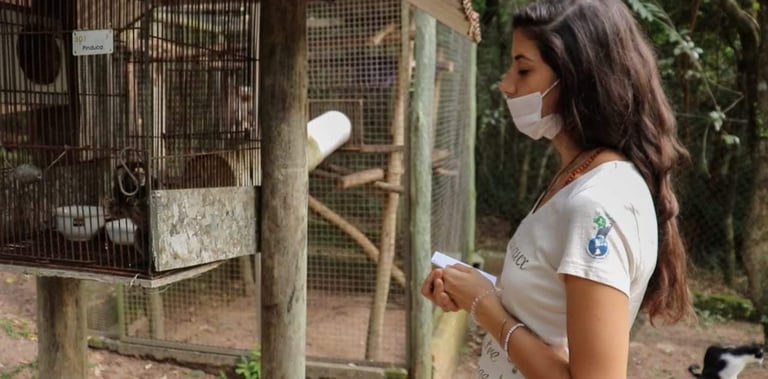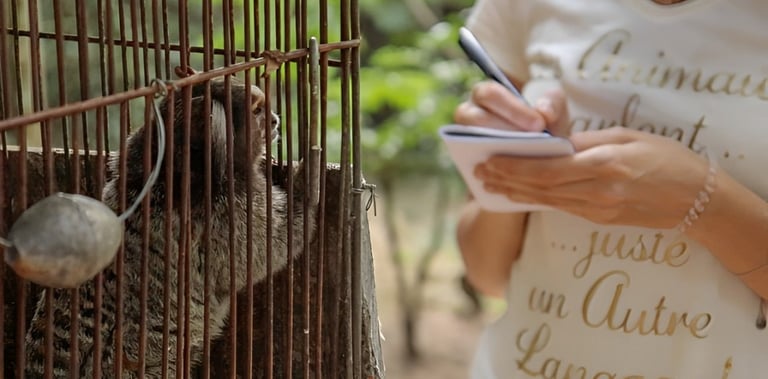Brazil: Came for The Wild, Stayed for The Love
Kenza Zainoune
9/20/20244 min read


In 2019, what started as a 3 weeks travel ended up to a 6 months journey, exploring the rich diversity of the culture, natural landscapes, powerful spirituality and wildlife of Brazil. My travels took me across the vibrant states of São Paulo, Rio de Janeiro, Santa Catarina, Bahia, and Espírito Santo - each place offering a unique blend of colors, musics, nature and meaningful opportunities to engage in wildlife conservation.
Exploring the Heart of Brazil
From the cosmopolitan energy of São Paulo to the majestic shores of Bahia, I understood pretty fast how Brazil truly was a country of contrasts. In São Paulo, the largest city in South America, I experienced a part of its dynamic culture. Moving on to Rio de Janeiro, I had to go visit the iconic Cristo Redentor statue, among other famous places, before soaking into the warm and joyful atmosphere of Copacabana Beach. Carnaval season oblige, a lot of dancing and music also!
I then spent nearly two months at a non-dual community called Source Temple - a whole story in itself that I'll save for another time :) after two weeks there, I chose to miss my flight home and stay in Brazil for an indefinite period (if I told you the land itself actually told me to do so, would you believe me?).
My journey continued to Santa Catarina, where the natural beauty of Florianópolis ("The Magic Island") captivated me. A place that truly had my heart in many ways... . Bahia, with its sandy shores and rich Afro-Brazilian culture, offered a different rhythm, while Espírito Santo provided a blend of coastal and mountainous landscapes. Each state left its mark on me, not just for its beauty, but for the warmth and hospitality of its people and the incredible richness of what I experienced there... .


Collaborating with Wildlife Rehabilitation Centers
This trip was not just about tourism; but was also a journey of purpose. I had the privilege of collaborating with three incredible wildlife rehabilitation centers: Projeto Mucky, Associação Mata Ciliar, and Projeto Tamar. These organizations are dedicated to the care and conservation of Brazil's diverse wildlife.
A Transformative Experience
Words sometimes fail me when trying to explain how deeply this country touched me... . My stay in Brazil has been a profound reminder of the Earth's wisdom and the powerful connection between nature and humanity. The immense beauty of this country, from its diverse ecosystems to its generous culture, its people with such open hearts, its musics and dances, revealed to me the deep harmony that exists when we honor the Earth and its creatures. I felt the love and resilience that emanate from the land towards its inhabitants, which fueled my commitment to protect and cherish the delicate balance that supports us all.
It is the only country I left without crying, feeling so deeply connected to the land in my heart, and so certain to return to it, one day... .
Projeto Mucky Instagram Page | Website
Mata Ciliar Instagram page | Website
Projeto Tamar Instagram page | Website
Projeto Mucky
In São Paulo, I spent time with Projeto Mucky, a non-profit organization that has been caring for primates since 1985. Here, I learned about their innovative approaches to animal care, which include alternative medicines such as acupuncture, hydrotherapy, phytotherapy, and sound therapy. The center is home to a variety of primates, including marmoset monkeys, red howler monkeys, squirrel monkeys, and even coatis. It was inspiring to witness the dedication of the team and the incredible healing work they do.


Associação Mata Ciliar
Next, I collaborated with Associação Mata Ciliar, located in Jundiaí, São Paulo. Since 1997, this organization has been at the forefront of biodiversity conservation. The center's wildlife coordination and environmental education programs are vital for the protection of Brazil's native species. The residents here included titi monkeys, maned wolves, leopards, pumas, macaws, Picazuros (wild doves), and even a python. The care provided to these injured animals is comprehensive, ranging from veterinary treatment to rehabilitation and eventual release into their natural habitats.


Projeto Tamar
My journey also took me to Florianópolis in Santa Catarina, where I visited Projeto Tamar, an internationally recognized foundation dedicated to marine conservation. Established in 1980, Projeto Tamar has played a crucial role in protecting species of marine turtles threatened with extinction along the Brazilian coast. The foundation also works to safeguard sharks and other marine life. At the Barra da Lagoa Unit, I had the chance to observe the rehabilitation of sea turtles and learn about the extensive conservation efforts that have made Projeto Tamar one of the most successful marine conservation projects in the world.




Communication with a marmoset monkey


SUSCRIBE TO MAILING LIST


